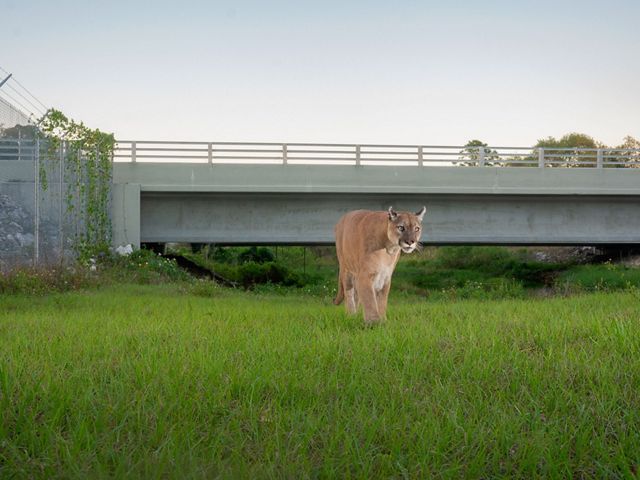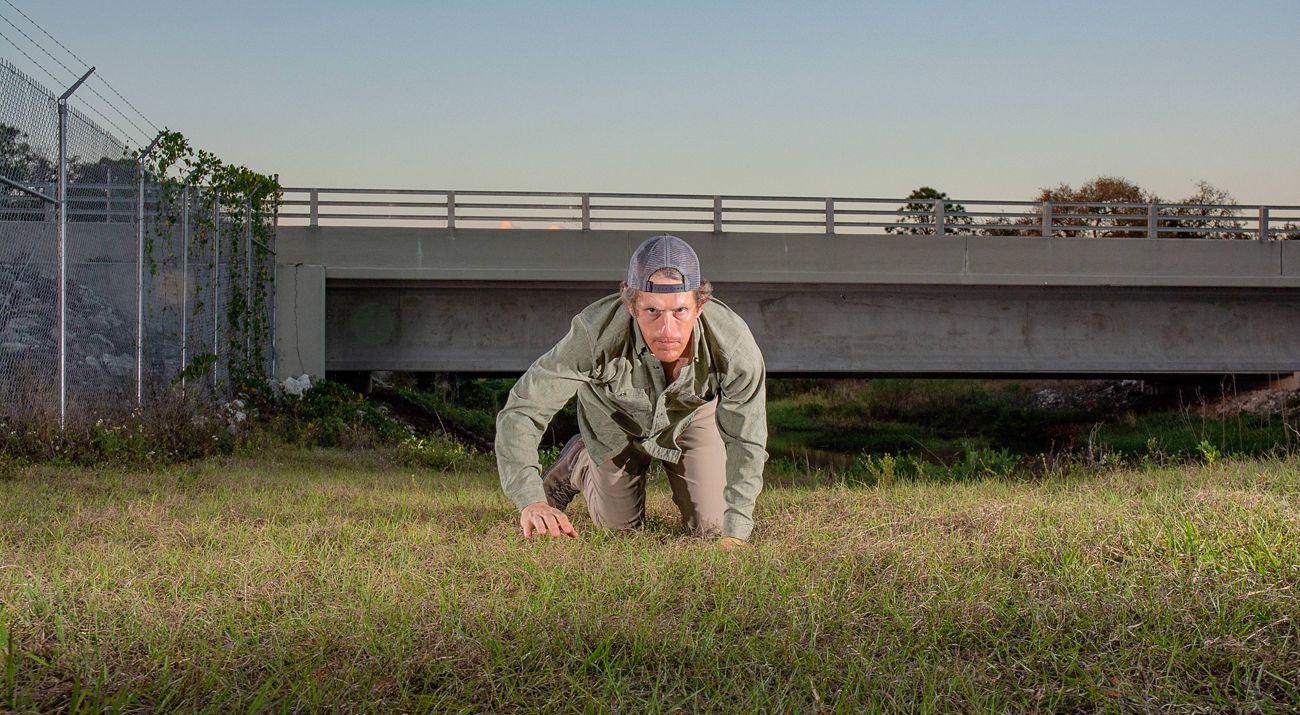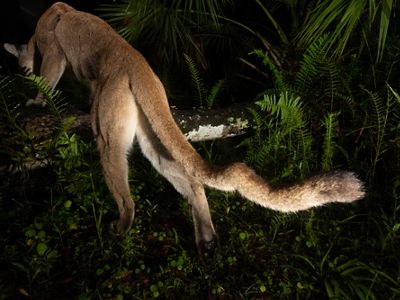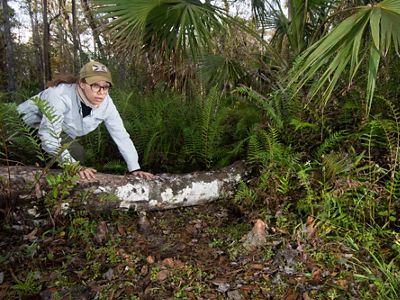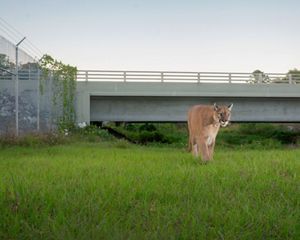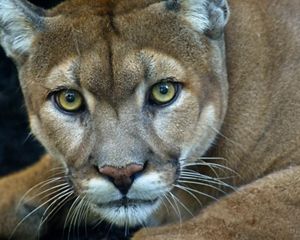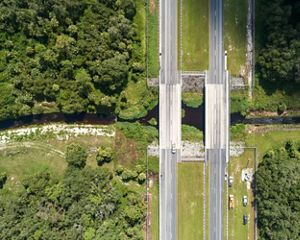On the Hunt for the Ghost Cat
Photographing Panthers in the Florida Wild
Winter 2019
Photographer Carlton Ward Jr. knows for sure he’s seen a Florida panther in the wild twice, probably three times in his life, he says. But two of those times he wasn’t holding a camera.
“The one time I had a camera in my hand and actually photographed it, it was electrifying,” he says.
That’s probably about par for photographing the rare and elusive nocturnal panther.
From the Magazine
Read "The Panther's Path" in Nature Conservancy magazine's Winter 2019 issue to learn about the conservation efforts protecting the habitat the Florida panther relies on.
Ward has photographed the endangered big cat full-time since 2016. He received a commendation for his efforts from the Wildlife Photographer of the Year Awards this October, and he spent a year tracking and photographing the panther for a story in Nature Conservancy magazine’s Winter 2019 issue. As electrifying as it may be to see a panther in person, Ward has turned to a network of sophisticated camera traps to capture images of the nocturnal mammal, along with trial and error and research—lots of research.
“I start by working with researchers who know the behaviors of the cats better than anyone,” Ward says.
Ward became engrossed with panthers after he began advocating for a statewide wildlife corridor network in 2010—a process that brought him into contact with Florida wildlife experts and conservationists. The advocacy group that formed out of these efforts, Florida Wildlife Corridor, went on two 1,000-mile expeditions through the state to show how public lands and working lands function together and, occasionally, to see the paths wide-roaming animals like the panther must traverse.
“At that moment, I saw the panther as a symbol of the statewide corridor system,” Ward says. “If we can save the land that’s needed for a panther, we can save the land that’s needed for all the other wildlife and ourselves.”
Finding the Subject:
A male Florida panther has a range of up to 200 square miles. In the 1970s, when the panther was listed as endangered only about 20 individuals remained. Now about 200 individuals live in the wild. But space for the solitary cat is dwindling: A 2019 report projected that Florida will gain more than 900 people per day through 2022, pushing the state's population to 22 million and increasing demand for space.
To ensure wildlife like the panther are in the public’s consciousness, Ward sets up his cameras to capture images of the cat in recognizably Floridian habitat. “It’s balancing two things,” he says, “where the animals will likely be and then a context where the picture tells a story.” So, swamp, for instance. Or, in the case of the Nature Conservancy magazine story, an overpass to illustrate the wildlife-human interaction.
“It’s like setting up a studio in the woods,” he says. “You find an ideal background, you set your camera and multiple flashes to provide light from different angles at different intensities. And then you set an infrared beam to trigger the camera exactly where you want that animal to be.”
Ward and his assistants often test the triggers to ensure an animal approaching at a particular angle will activate the camera and the flashes. The whole set up is a methodically controlled studio.
Quote: Carlton Ward Jr.
“It’s this mixture of control and chaos and unpredictability and I think that’s where some of the magic comes from."
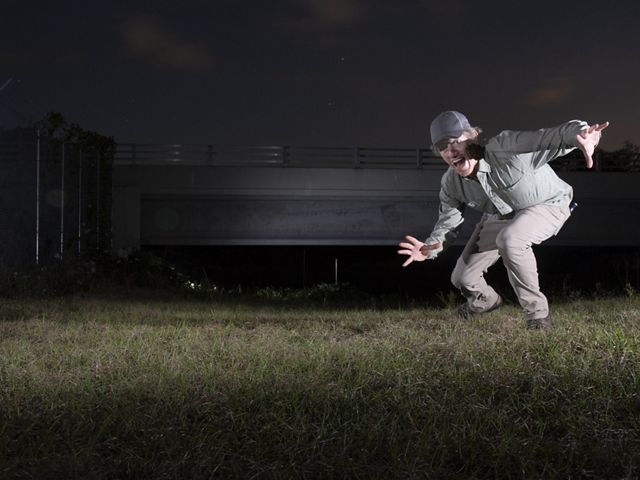
A Studio in the Wild:
“You’re paying attention to every detail you possibly can control: So that’s the placement of the trigger, the placement of the camera, the focal length. Everything is shot on either manual exposure or a fixed aperture. You have anywhere from three to five camera flashes that are all set manually,” he says. “You’re controlling everything you can, but then you’re turning that system loose in a wild setting, where it’s completely out of control at the same time.”
“It’s this mixture of control and chaos and unpredictability and I think that’s where some of the magic comes from,” he says.
It’s also where some of the funnier snafus happen. During the shoot for the magazine feature story, a mouse scurrying near the sensor repeatedly triggered the camera. Working in the wild can have its challenges.
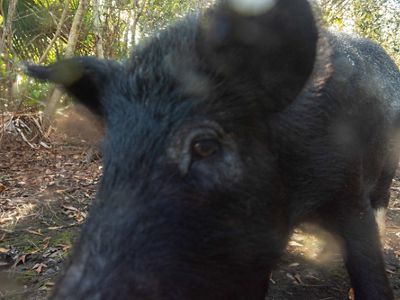
“It’s like all the elements are conspiring against you: the swamps change quickly, in some months it rains 30 inches and cameras get drowned or curious bears mangle your camera systems or knock over your triggers, or batteries die prematurely because insects get into enclosures, or rodents chew through wires,” he says. But those challenges also make the good pictures—when Ward returns to a trap and finds an image of an elusive big cat waiting for him—all the better.
That was the case with the image that appeared as the opener for the story in Nature Conservancy magazine’s winter issue.
“That picture represents two years of effort in that location,” he says. “But it captures kind of the wild essence of the Everglades habitat and the panther that has been shaped by it. And that’s what I was going for.”
